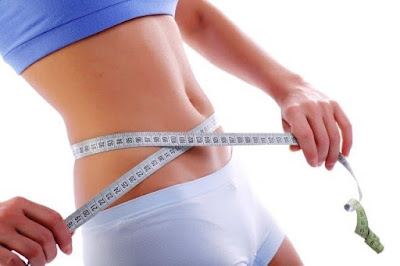Getting rid of your belly bulge is important for more than just vanity's sake. Excess abdominal fat particularly visceral fat, the kind that surrounds your organs and puffs your stomach into a "beer gut" is a predictor of heart disease, type 2 diabetes, insulin resistance, and some cancers. If diet and exercise haven't done much to reduce your pooch, then your hormones, your age, and other genetic factors may be the reason why. Read on for 6 possible reasons why your belly won't budge.
1- You're getting older:
As you get older, your body changes how it gains and loses weight. Both men and women experience a declining metabolic rate, or the number of calories the body needs to function normally. On top of that, women have to deal with menopause.
"If women gain weight after menopause, it's more likely to be in their bellies," said Dr. Michael Jensen, professor of medicine in the Mayo Clinic's endocrinology division. In menopause, production of the hormones estrogen and progesterone slows down. Meanwhile, testosterone levels also start to drop, but at a slower rate. This shift in hormones causes women to hold onto weight in their bellies. The good news: you can fight this process. Read on.
2- You're doing the wrong workout:
A daily run or Spin class is great for your heart, but cardio workouts alone won't do much for your waist.
"You need to do a combination of weights and cardiovascular training," said Dr. Sangeeta Kashyap, an endocrinologist at Cleveland Clinic. Strength training increases muscle mass, which sets your body up to burn more fat.
"Muscle burns more calories than fat, and therefore you naturally burn more calories throughout the day by having more muscle," said Kate Patton, a registered dietitian at Cleveland Clinic. Patton recommends 250 minutes of moderate-intensity exercise or 125 minutes of high-intensity exercise a week.
3- You're eating too many processed foods:
"Refined grains like white bread, crackers, and chips, as well as refined sugars in sweetened drinks and desserts increase inflammation in our bodies," Patton said. "Belly fat is associated with inflammation, so eating too many processed foods will hinder your ability to lose belly fat."
Natural foods like fruits, vegetables, and whole grains are full of antioxidants, which have anti-inflammatory properties and may therefore actually prevent belly fat, Patton says.
4- You're eating the wrong fats:
The body doesn't react to all fats in the same way. Research correlates high intake of saturated fat (the kind in meat and dairy) to increased visceral fat, Patton said. On the other hand, monounsaturated fats (the kind in olive oil and avocados) and specific types of polyunsaturated fats (mainly omega-3s, found in walnuts, sunflower seeds, and fatty fish like salmon) have anti-inflammatory effects in the body, and if eaten in proper portions may do your body good. But Patton warned that eating too much fat of any kind increases your calorie intake and could lead to weight gain, so enjoy healthy fats in moderation.
5- You're doing the wrong exercises:
Doing crunches until the cows come home? Stop it! When you're down to your final inches of belly fat, the dreaded crunch won't be the exercise that finally reveals your six-pack.
"You can't spot reduce," Jill said.
Instead, she suggests doing functional exercises that use the muscles in your core abdominals, back, pelvic, obliques as well as other body parts.
"These exercises use more muscles, so there is a higher rate of calorie burn while you are doing them," she said.
Planks are her favorite functional exercise they activate not just your core muscles but also your arm, leg, and butt muscles.
6- You're stressed:
Tight deadlines, bills, your kids whatever your source of stress, having too much of it may make it harder for you to drop unwanted pounds, especially from your middle. And it's not just because you tend to reach for high-fat, high-calorie fare when you're stressed, though that's part of it. It's also due to the stress hormone cortisol, which may increase the amount of fat your body clings to and enlarge your fat cells. Higher levels of cortisol have been linked to more visceral fat.













